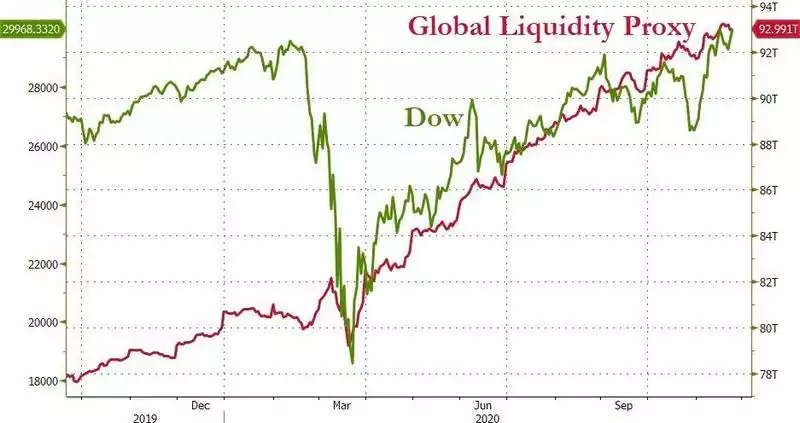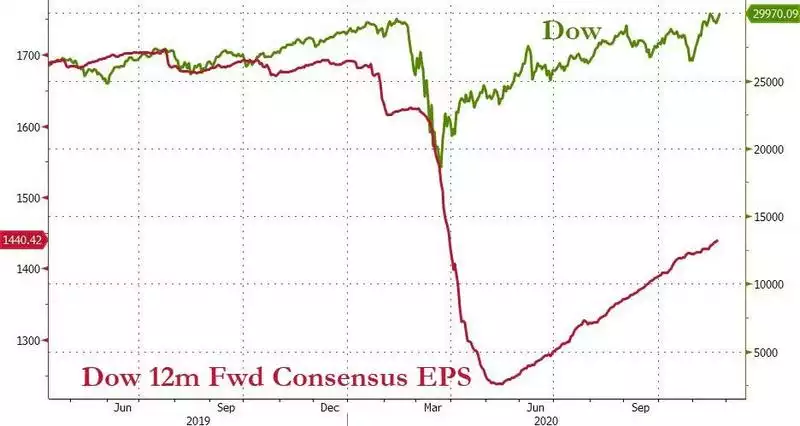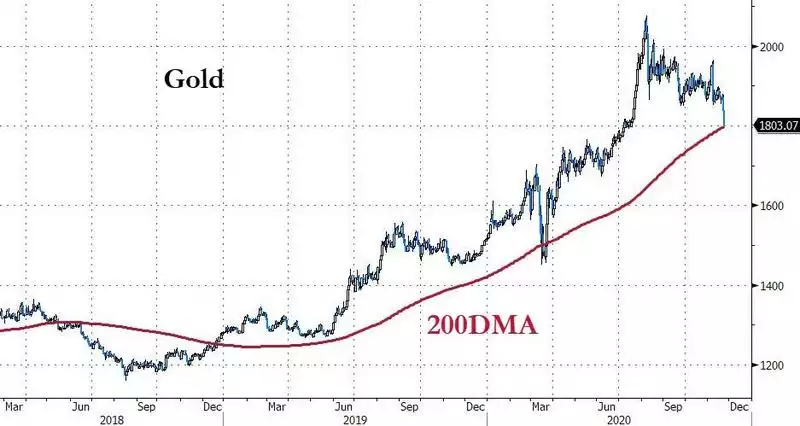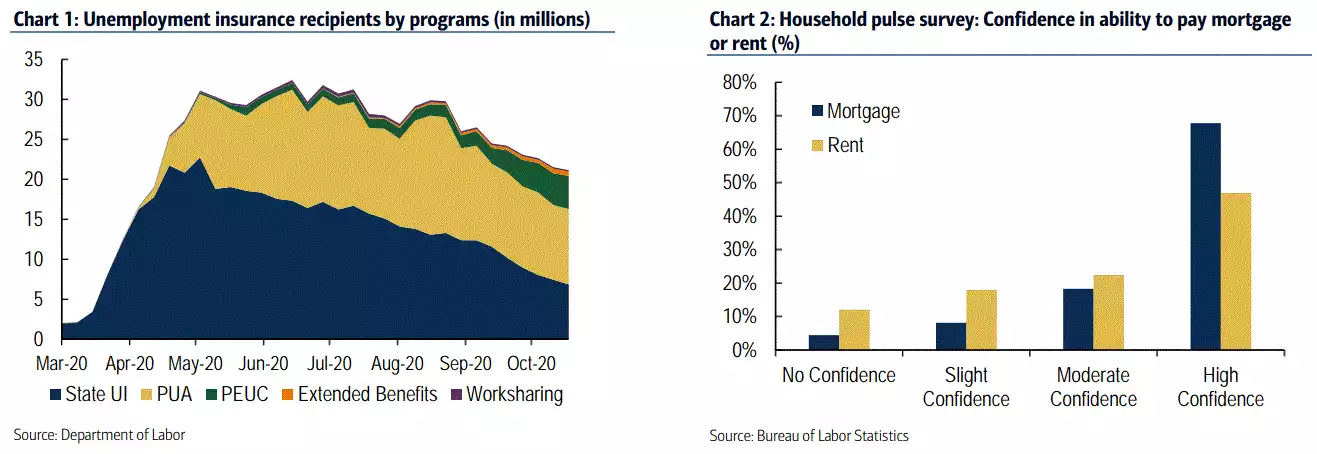“You can’t have your cake and eat it”
News
|
Posted 25/11/2020
|
8180
News headlines are heralding the new all time high reached in the Dow Jones Industrial Average last night breaching 30,000. Vaccines and a seamless transition to Biden are grabbing the “everything’s awesome” trade with gusto with nary a word around that maybe, just maybe, 30,000 was reached on the back of unprecedented amounts of monetary stimulus. The chart below says it all. From the bottom of the March plunge, $14 trillion of liquidity via central banks and fiscal stimulus has flooded the market. Look closely and you may see a ‘slight’ correlation with the Dow index….

It certainly isn’t the fundamentals of earnings. You might remember ‘earnings’ as a basis for valuing a company before stimulus fuelled ‘momentum’ took over. As a reminder, this is how forward earning consensus looks for the year ahead compared to the price…

There are certain long term realities around investing in equities. Fundamentally you are investing in a company, its future earnings and your confidence in its management to deliver.
Topically, CNBC’s Jeremy Grantham recently put it nicely:
“The one reality that you can never change is that a higher-priced asset will produce a lower return than a lower-priced asset. You can’t have your cake and eat it. You can enjoy it now, or you can enjoy it steadily in the distant future, but not both – and the price we pay for having this market go higher and higher is a lower 10-year return from the peak.”
John Hussman in observing an interview conducted with Grantham shared this insightful observation into the ‘everything’s awesome’, ‘this time is different’ mentality recently
“One of the remarkable features of financial television is the single-minded focus of its talking heads on the latest move – their full-fledged immersion in the now. In contrast, the thinking of a disciplined value-investor is primarily on the long-term and the complete cycle. Our measures of market internals are certainly helpful in navigating shorter periods of speculation and risk-aversion. Still, investors who abandon the Iron Law of Valuation are inviting a world of pain.
Take a set of future cash flows and the current price of those cash flows: the relationship between the two reflects the rate of return that investors can expect to attain over time. That’s not a theory, it’s just arithmetic.
The CNBC interview with Jeremy Grantham offered a striking example of the difference between long-term and short-term thinking. Even as Grantham reiterated the extreme valuation concerns he discussed a few months ago, the interviewer countered, “Markets have risen since then. Why are you still convinced?”
Grantham responded, “Actually, it works quite the other way around. The more spectacular the rise, and the longer it goes, the more certainty one can have that you’re in a real McCoy bubble.””
And whilst yes the vaccines will no doubt be a big boost, we remind you things were poor BEFORE the pandemic and a monumental amount of debt has been added since. The next half a year will be very interesting to navigate. Bank of America just raised concerns around the so called fiscal cliff facing the US at the end of this year whilst amid the second wave and the no-mans-land before Biden takes over:
• Many pandemic-aid programs in the CARES Act are set to expire at the end of the year without action from Congress.
• The expiration of federal UI [unemployment insurance] programs—PUA and PEUC [both different types of unemployment benefits]—alone could be a drag of 1.5pp in 1Q. Cutoff of other provisions will be additional headwinds.
• We expect Congress to pass another package of $500bn-$1tn in early 1Q which should offset the drag and support growth into 2Q.”
(At the bottom of this article is the full explanation for those wanting more detail.)
By comparison we have seen gold and silver come off substantially this week, with gold now hitting its 200 daily moving average which hasn’t been sustainable breached since May 2018.

Of course by comparison Bitcoin and Ethereum are still rocketing up. In the past the old and new hard assets have shared a loose correlation but the divergence this month has been pronounced. The aforementioned fundamentals would suggest that gold and silver are lagging and poised to follow with this dip being a buying opportunity. Only time will tell and a portfolio including both is one more balanced for what’s ahead.

The remainder of that BofA article is below:
On the cliff’s edge
Many provisions in the CARES Act are set to expire at the end of the year without action from Congress. Here we take a look at the upcoming fiscal cliff and its potential impact on the economy. We find that the expiration of the federal unemployment insurance (UI) programs alone could be a drag of up to 1.5pp to growth in 1Q. The expiration of eviction moratorium, mortgage forbearance programs, and suspension of student loan payments could all be headwinds early next year, creating further obstacles.
Hard deadline for UI benefits
The CARES Act expanded unemployment insurance eligibility and duration during the pandemic. The Pandemic Unemployment Assistance (PUA) program gave unemployment benefits to workers who are normally ineligible for regular state UI programs such as contract and self-employed workers. The PUA gave these workers 39 weeks of unemployment benefits. Meanwhile the Pandemic Emergency Unemployment Compensation (PEUC) program provided 13 additional weeks of benefits to those that exhausted regular state UI benefits. These programs will expire on December 26th.
Currently, there are over 21mn unemployed workers receiving UI benefits of which 13.6mn are enrolled in either PUA or PEUC (Chart 1). According to analysts at the Century Foundation, roughly 12 million workers enrolled in PUA or PEUC will see their UI benefits cut off at yearend. This would roughly translate into an income shortfall of $39bn in 1Q if these workers are unable to find work or alternative income support. Based on our work on fiscal multipliers, income loss of $39bn would translate into a 1.2pp hit to growth on an annualized basis in 1Q 2021.
Beyond the direct hit to those losing their benefits at yearend, many that are currently on regular state UI programs will exhaust their eligibility and be left without a safety net. A back of the envelope calculation suggests an additional 2.4mn workers who are currently on regular UI benefits will exhaust all available UI resources by 1Q of next year, which would amount to roughly an $8bn income loss or a drag of 0.3pp to growth.
Admittedly, our estimates are likely to be upper bound as it assumes all workers exhausting UI benefits will remain unemployed for the full quarter. Still, without any additional UI support, we estimate the income loss could be a drag of up to 1.5pp to growth in 1Q 2021. Moreover, there could be a second mini-cliff in 2Q if there is no additional stimulus as workers on extended UI benefits in select states exhaust their aid.
Bills come due
The CARES Act also provided some temporary payment relief. It prohibited landlords with federal guaranteed mortgages from evicting tenants until December 31st. According to a survey run by the Urban Institute, 1/3rd of landlords reported not being paid rent in full in September. This implies roughly 30mn renter households will be at risk of eviction once the moratorium expires. Homeowners with federally guaranteed mortgages could request loan forbearance up until December 31st. Those who requested and received forbearances prior to the deadline would be able to delay mortgage payments up to a year. According to the Mortgage Bankers Association, loans in forbearance stood at 5.7% in the week ending November 15, which roughly translates to 2.7mn homeowners in some sort of forbearance plans.
While it’s difficult to quantify the growth impact from these provisions expiring, we expect it to have a meaningful impact if consumers are unable to keep current on their debt. According to a study done by Collison and Reed (2018), the value of avoiding an eviction is approximately $8,000 per household.3 Meanwhile, studies on foreclosures showed that foreclosure-related sales had prices about 27% lower than comparable properties and each foreclosure lowered the selling price of nearby non-foreclosure properties by 1%.4
There’s nontrivial risk that many households will be unable to pay their debts. The latest Household Pulse Survey from the Census Bureau shows that close to 30% of renters and roughly 12% of homeowners with mortgages have slight-to-no confidence that they will be able to make next month’s payment (Chart 2).
Last, consumers with student debt will have to resume payments in January. According to a study done by the NY Fed, the payment freeze during the pandemic saved borrowers roughly $7bn per month. All told, debt payments coming due could be a major headwind for the economy at the start of next year.
An economy without a safety net
The economy will be operating without a safety net in January. It is likely to be shortlived, however, as we expect Congress and the new Biden administration to strike a deal on a new stimulus package of $500bn-$1tn after inauguration. Ultimately the new package should be able to offset the drag and boost growth by 2.5pp in 2021. However, time is of the essence – any delay after inauguration will create a headwind.
